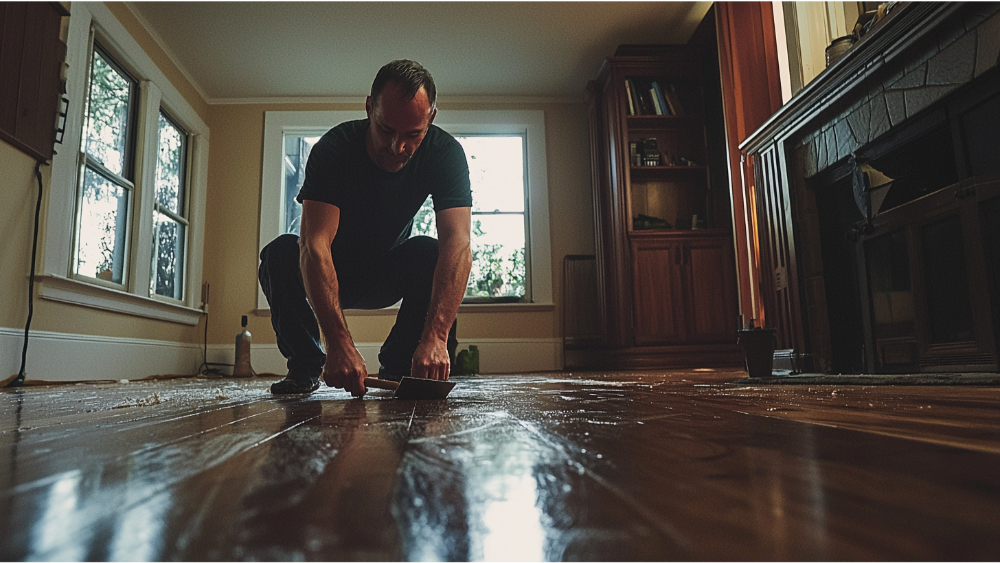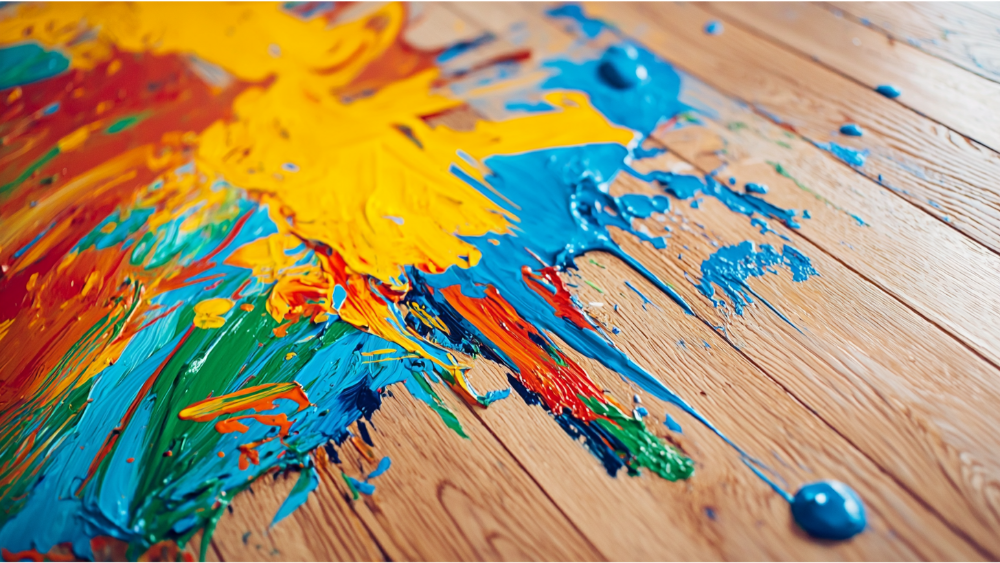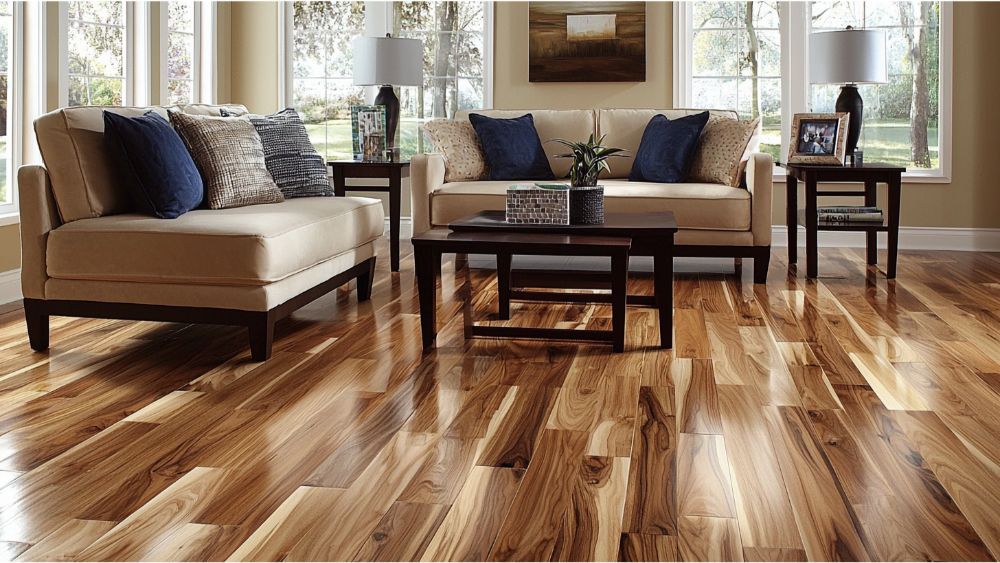If you’ve ever had a candle tip over, used the wrong polish, or simply neglected routine maintenance, you know how frustrating wax on your floors can be. Whether it’s hardened wax from candle wax spills, old polish layers, or excess wax buildup from cleaning products, removing wax isn’t just about appearance—it’s essential for safety and longevity.
At Best Floor Covering, we understand how to restore beauty without compromising your floor’s integrity. In this complete guide, we’ll walk you through how to get wax off your floor, step-by-step, no matter the material—wood floors, vinyl flooring, tile floors, or laminate materials.
Why Floor Wax Removal Matters
Wax might seem harmless at first, but over time, wax residue creates a slippery surface, traps loose dirt, and dulls the wood’s finish or sheen of vinyl and tile. If left untreated, hardened wax can lead to stubborn stains, sticky buildup, or even discoloration. When multiple wax layers are applied over time, the floor becomes harder to clean and more prone to damage.
You may be tempted to ignore the waxed area until a major clean is needed, but regular cleaning helps prevent future buildup. That includes checking for excess wax from previous polishing or cleaning products. If you’re dealing with wax buildup that affects the appearance or safety of your floors, now’s the time to take action.
Know Your Floor Type First (Crucial!)
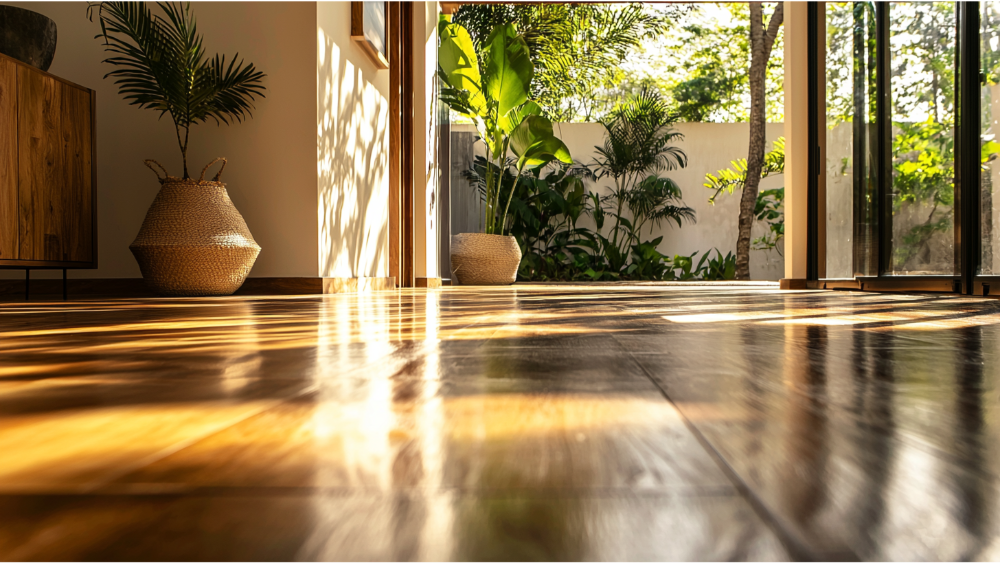
Each flooring material reacts differently to moisture, heat, and cleaning solutions. Before removing wax, it’s critical to identify the floor type so you don’t damage the finish.
1 | Hardwood floors – Sensitive to water and harsh chemicals. Requires gentle tools like a plastic putty knife or soft cloth. Avoid steam cleaning or mineral spirits unless absolutely necessary.
2 | Laminate floors – Durable but vulnerable to moisture. Cleaning laminate floors requires minimal liquid and no steam cleaner.
3 | Vinyl flooring – Easier to maintain, but the wrong floor wax remover can still leave residue.
4 | Tile floors – Tougher surface, but grout lines can absorb hot wax and discolor. Use a ph neutral tile cleaner to preserve appearance.
5 | Engineered wood – Similar to wood floors but with a thinner wood grain layer. Avoid abrasive tools.
6 | Natural stone – Never use vinegar solution or acidic products. Stick to stone-safe, pH-neutral cleaners.
For help identifying your flooring or professional advice, visit [Best Floor Covering’s Flooring Services Page].
How to Remove Candle Wax from Floors
Use an Ice Pack for Hardened Wax
If you’re dealing with hardened wax from candle wax drips, start by applying an ice pack to solidify it further. Once brittle, gently scrape it with a plastic scraper or a plastic putty knife to avoid damaging the floor.
Use a Hair Dryer and Paper Towel
Another option is the heat method. Place a paper towel or absorbent cloth over the waxed area. Using a hair dryer or warm iron on a low setting, apply heat to melt the wax. As the softened wax liquefies, it will absorb into the cloth. Repeat as needed to get all the wax removed.
Try a Safe Floor Wax Remover
After removing the bulk of the wax, you may still see a thin film of wax residue. Use a floor wax remover that matches your floor type—whether you’re cleaning wood floors, vinyl, or tile—to ensure a clean, safe surface.
Removing Wax from Wood Floors Without Damaging the Finish
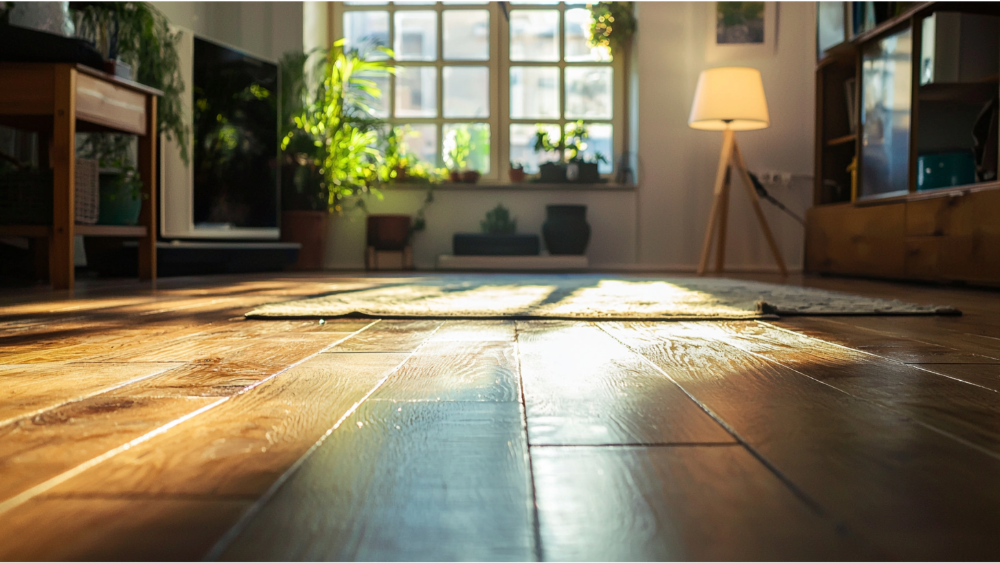
When it comes to removing wax from hardwood floors, care is everything. The wood floor finish can be easily damaged by moisture or abrasive tools.
Cleaning Process for Wood Floors
- Start by removing any loose wax with a plastic scraper.
- Apply gentle heat using a hair dryer to soften remaining wax layers.
- Use a damp cloth with mild dish soap or a vinegar solution (only on sealed surfaces) to clean the area.
- Dry immediately with a clean cloth or soft cloth to protect the wood grain.
What Not to Use on Wood
Avoid mineral spirits unless working with unfinished wood or under professional guidance. Never apply steam cleaner tools to hardwood, as the steam cleaning process can warp boards and damage the wood’s finish.
Restore the Shine
After removing wax, use a wood-safe cleaner to restore luster. If needed, lightly buff the surface or apply a compatible wood floor finish product.
Cleaning Laminate Floors: Removing Wax Safely
Laminate floors are not wax-friendly. In fact, most laminate materials are not designed to be waxed at all. So when wax does find its way there—whether through cleaning products or candle wax spills—it needs to go.
Cleaning Process for Laminate
- Use a damp cloth with warm water and a tiny amount of dish soap.
- Gently scrub the waxed area with a soft scrub brush or mop head.
- Rinse with a clean cloth, being careful not to saturate the floor.
- Dry the area immediately with an absorbent cloth to avoid swelling.
Avoid steam cleaning laminate floors or using harsh chemicals. Also, never soak the floor—always use a separate mop for wax cleanup to avoid spreading residue.
Cleaning Tile Floors: Removing Wax and Grime
Tile floors can handle more aggressive methods, but care must be taken with grout and porous tiles.
How to Remove Wax from Tile Floors
- Gently scrape hardened wax with a plastic putty knife.
- Use hot water and a bit of laundry detergent or dish soap for cleaning tile floors.
- For stubborn stains or remaining wax buildup, try steam cleaning with a steam cleaner that has a clean water tank and adjustable heat.
- Follow up with a ph neutral tile cleaner to protect the surface and grout.
Never use abrasive tools that could scratch the tile or harsh chemicals that degrade grout sealant.
Best Commercial Floor Wax Removers (2025 Picks)

When DIY methods fall short, these commercial solutions are effective on multiple surfaces:
- Zep Heavy-Duty Floor Stripper – Ideal for removing wax from vinyl flooring and sealed tile.
- Trewax Instant Wax Remover – A fast-acting option but not safe for wood floors.
- Nyco Low-Odor Wax Remover – Great for sensitive environments or larger rooms.
Always follow the manufacturer’s instructions carefully. Wear gloves, ventilate the space, and test any product in a discreet corner before applying to the entire floor.
Tools That Make Wax Removal Easier
To improve efficiency and avoid damage, use the right equipment:
- Plastic scraper or plastic putty knife – For gently lifting hardened wax.
- Steam cleaner – Only on suitable floors like vinyl and tile.
- Soft scrub brush – Great for cleaning grout and textured tile.
- Mop head and separate mop – For rinsing without cross-contaminating other areas.
- Absorbent cloth and clean cloths – For drying waxed areas and final touch-ups.
Open windows or turn on fans during the cleaning process to help dry surfaces quickly and reduce moisture risks.
Eco-Friendly and DIY Wax Removal Methods
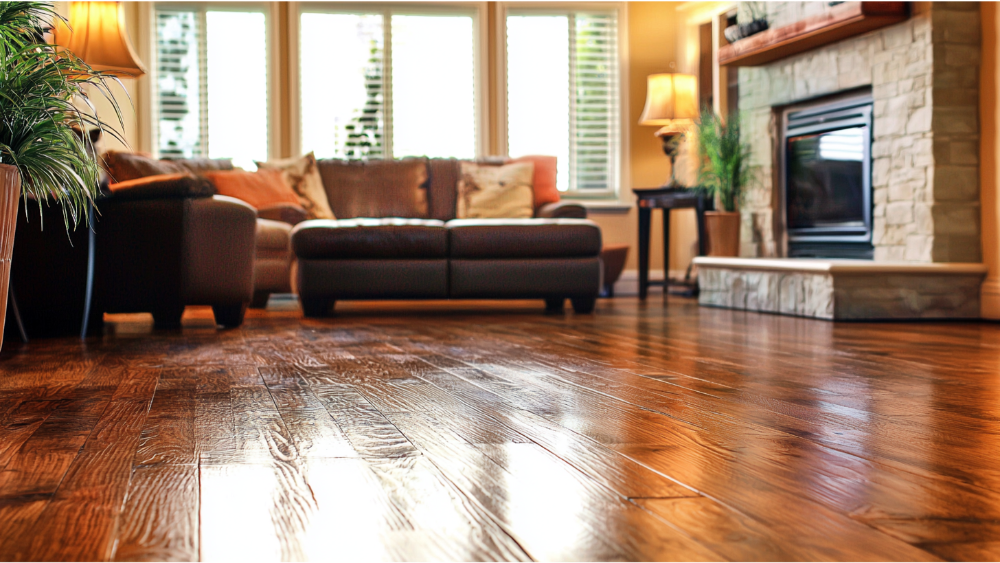
For smaller spills or a non-toxic alternative, you can make your own cleaning solution.
- Baking soda paste (baking soda and warm water) works well for scrubbing small spots on tile.
- Vinegar solution (equal parts vinegar and water) is effective on vinyl and tile floors.
- Rubbing alcohol or isopropyl alcohol can break down wax residue on sealed surfaces—apply carefully with a soft cloth.
DIY methods are great for maintenance but may not work on thick wax layers or tough stains.
Preventing Future Buildup
Once you’ve removed all the wax, prevention is key.
- Stick to floor cleaners made specifically for your flooring type.
- Avoid wax-based polishes unless the manufacturer recommends them.
- Incorporate regular cleaning with a dry mop or microfiber cloth.
- Wipe up spills immediately, especially hot wax from candles or polish.
- Use rugs or mats in high-traffic areas to protect flooring and reduce the need for wax-based shine.
Over-waxing not only leads to wax buildup but also makes your floor more prone to damage in the long run.
Frequently Asked How to Get Wax Off Floor Questions
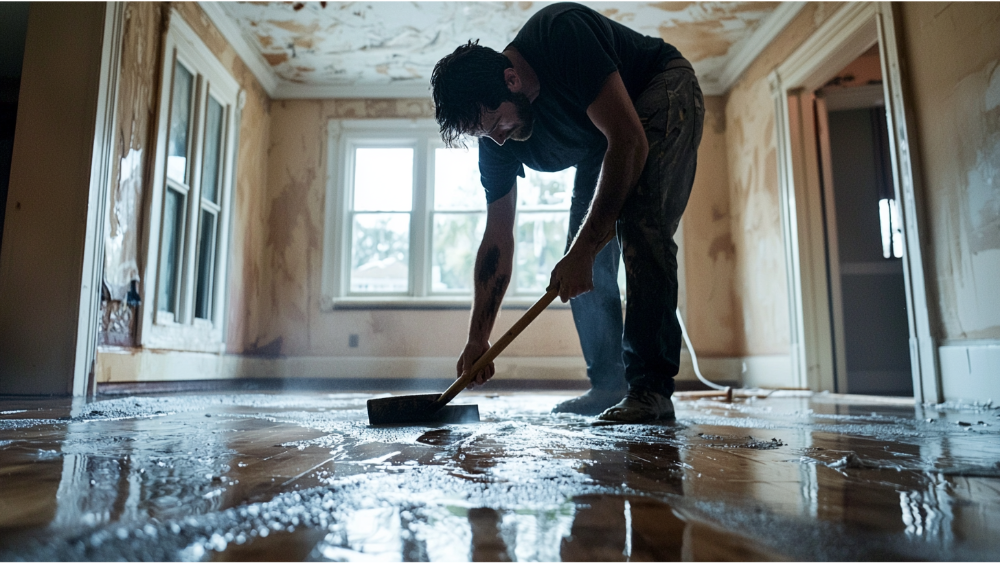
How do you remove wax from floors?
To remove wax from floors, start by hardening the wax with an ice pack or softening it using a warm iron or hair dryer over a paper towel. Gently scrape the wax with a plastic putty knife, then clean the area with a floor-safe cleaning solution and a damp cloth to remove any remaining residue. Always match the method to your specific floor type to avoid damage.
Does rubbing alcohol remove wax?
Yes, rubbing alcohol (isopropyl alcohol) can help remove wax residue, especially on hard, sealed surfaces like tile or vinyl. It breaks down leftover oils and wax films, but it should be used sparingly and tested first, as it may dull or damage sensitive finishes like wood floors.
How do I clean wax from grout lines?
Use a soft scrub brush with warm water and laundry detergent. For deeper stains, a pH-neutral tile cleaner can help.
Final Thoughts: Restore the Shine Without the Stress
Wax can enhance your floors when used correctly—but when it builds up or ends up where it shouldn’t, it needs to go. Whether you’re trying to remove candle wax, deep-clean tile floors, or eliminate residue on laminate, using the right tools and methods makes all the difference. Always choose safe products, avoid harsh chemicals, and tailor the process to your specific flooring.
For expert help, product recommendations, or a professional steam cleaning service, contact Best Floor Covering today. We’re here to help you maintain beautiful floors—safely and effectively.


